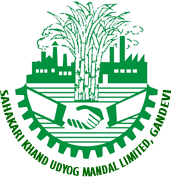What Is the Federal Reserve? Functions, Structure, and Impact
If the Fed raises interest rates too much, the economy can slow, harming Americans’ job prospects and bargaining power for higher wages. The Fed has also occasionally lowered interest rates when storm clouds are on the horizon, in an attempt to shore up an economic expansion. The Fed in 2019, for example, reduced rates at three straight meetings amid slowing global growth, the U.S.-China trade war and a realization that the labor market wasn’t as tight as officials previously thought. In those periods, the Fed will thus push on the brakes by raising its key benchmark interest rate, the federal funds rate. These words are often used to describe the central bank of the U.S., officially known as the Federal Reserve System.
Federal Reserve Banks
In the wake of the financial crisis, Congress passed a new buy and sell in currency pairs set of regulations, the 2010 Dodd-Frank Wall Street Reform and Consumer Protection Act. The legislation seeks to reduce systemic risk through a wide range of policies, including new limits on derivatives trading, stricter oversight of banks, and greater consumer protections. A major plank is the so-called Volcker Rule, named after the former Fed chair, which prohibits federally backed banks from proprietary trading, or making risky bets with their depositors’ funds.
The Federal Reserve stopped publishing M3 statistics in March 2006, saying that the data cost a lot to collect but did not provide significantly useful information.162 The other three money supply measures continue to be provided in detail. All U.S. depository institutions, bank holding companies (parent companies or U.S. broker-dealer affiliates), or U.S. branches and agencies of foreign banks were eligible to borrow under this facility pursuant to the discretion of the FRBB. With Donald Trump winning the US elections in 2024, the position of Jerome Powell, head of the US Federal Reserve, the world’s largest central bank, has come under threat.
US Federal Reserve: Is the US Fed private or public?
The Federal Reserve System performs five key functions that serve all Americans and promote the health and stability of the U.S. economy and financial system. It conducts the nation’s monetary policy, promotes financial system stability, supervises and regulates financial institutions, fosters payment and settlement system safety and efficiency, and promotes consumer protection and community development. Congress created these regional banks to ensure that the Fed was a “decentralized” central bank, meaning it didn’t just concern itself with what was happening on Wall Street or Capitol Hill. The presidents of each of the banks have to be approved by the Fed’s board but are selected through an independent search committee headed by the regional reserve bank’s board of directors. The central bank can use monetary policy to help bolster the labor market by increasing the money supply and lowering interest rates. A greater money supply can enhance demand, and lower interest rates may motivate individuals and businesses to take on more debt, stimulating the alphabetic online retail forex broker list economy and providing the demand that contributes to employment.
- Using a variety of data including United States Consumer Price Index and U.S.
- However, after the crisis, the FOMC used open market operations in an effort to keep long-term interest rates close to zero in order to facilitate economic growth.
- The 2008 financial crisis revealed regulations on individual banks weren’t enough.
- This system is decentralized by nature to help ensure that Fed officials account for communities from all over the country when formulating policy.
The Federal Reserve’s mandate
Through its discount window and credit operations, Reserve Banks provide liquidity to banks to meet short-term needs stemming from seasonal fluctuations in deposits or unexpected withdrawals. The rate the Fed charges banks for these loans is called the discount rate (officially the primary credit rate). While the Board of Governors is an independent government agency, the Federal Reserve Banks are set up like private corporations. Holding this stock does not carry with it the control and financial interest given to holders of common stock in for-profit organizations.
All nationally chartered banks hold stock in one of the Federal Reserve Banks. State chartered banks may choose to be members (and hold stock in their regional Federal Reserve bank) upon meeting certain standards. The Fed doesn’t have to seek presidential or congressional approval when deciding what to do with interest rates. The idea is, if the president has control over the Fed’s decisions, it will likely only approve a policy that supports a political interest, rather than what’s best for the broader economy. (Presidents, for example, have historically preferred low interest rates to keep the economy booming).
As is customary for the Fed, though, Powell avoided commenting directly on presidential policies. But he did acknowledge that exchange rate online eur to usd the Fed’s economists are assessing the potential effects of a Trump presidency. In a recent speech, Logan suggested that the Fed’s benchmark rate might be only slightly above the neutral level now.

